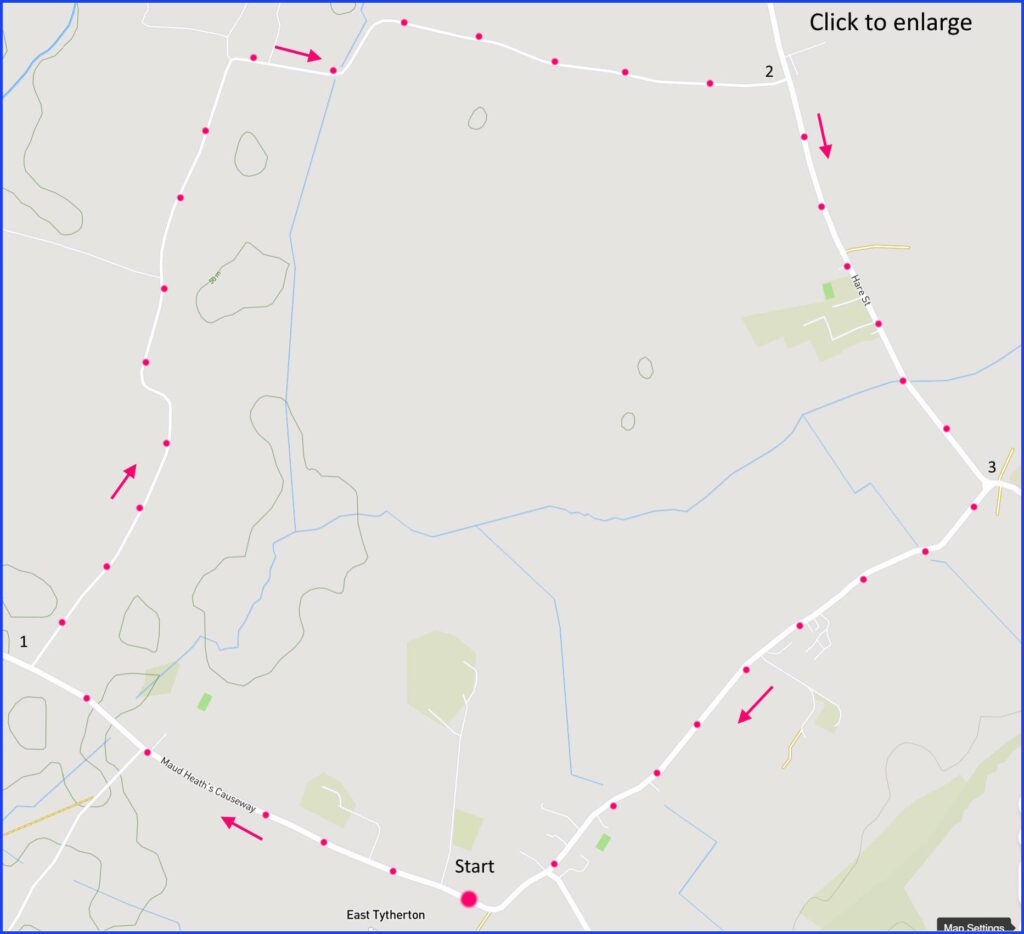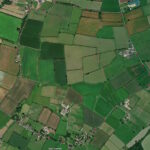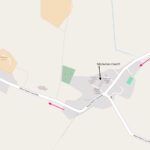A 4-mile, easy, flat walk on quiet roads with mainly good verges – but, as always, take care in case of occasional vehicle. Click here for an aerial view. Click here for a downloadable PDF of guide. (There is a GPX route option here for phone/tablet download. But only follow this link after watching this GPX help video). Friendly warning: all files relating to walks are published here in good faith but on the understanding that users must be responsible for their own safety and wellbeing.
(Routes suggested from each map point + metres to next point)
Start: Exiting Moravian church right onto Maud Heath causeway (signed Langley Burrell), head to a right turn signed ‘Avon’: 1.25m
1: Remain on this road until junction with Hare Street: 2.7km
2: Turn right and follow road to Y-fork: 970m
3: Sharp right and follow road back to start: 1.4km
The pictures below are in the order things were seen on this walk. Clicking on any one will enlarge it (and the slideshow)
The suggested walk starts at East Tytherton’s Moravian Church. Opposite is an attractive village green and some distinguished surrounding houses, including a 17th century Manor House (The Grove) – albeit well concealed from easy view. On the green is a modern sundial, constructed to commemorate the 500th anniversary of Maud Heath’s causeway bequest (see another WiltshireWalk for more on Maud Heath).
You should wander into the grounds of the Moravian Church. It’s an attractive building. The path that runs alongside it leads past Kellaways House to the (transplanted) Moravian church graveyard. The walk proper then takes you up Maud Heath’s causeway (historic perhaps but still the least attractive part of the route) and then – after the right turn to ‘Avon’ – along quiet country roads that make a square that returns you to the village.
The Moravian Church
What is a Moravian Church? Or, even, what is Moravia? Moravia was a region in central Europe, once part of Bohemia before being absorbed into Czechoslovakia (of which it is now a ‘province’). In the 14th century the “Bohemian Brethren” were among the first of many protestant church ‘separatists’. Thereby they were persecuted and they attempted to settle in Moravia. Persecuted again, some of them fled to England – not a bad choice for protestants in the 18th century.
John Wesley, founder of Methodism, was impressed with the Moravian faith. As was one of his pupils, the lay-preacher John Cennick. Cennick started preaching in Castle Combe and quite quickly was drawing big crowds in Wiltshire – some of whom became known as “Cennickers”. While Cennick himself was referred to as “the apostle of Wiltshire”. Not that he was universally popular: in fact, he was almost lynched in Swindon.
In 1742 Cennick purchased a house on the land you see as the current church. The community he anchored there (broadly Methodist/Quaker) finally become part of the ‘Moravian Brethren’ in 1745. Cennick died in London of a fever in 1755. But in 1785 the Moravian community he had founded built Kellaways House at East Trytherton for ‘single sisters’ (unmarried women actively embracing piety). In addition, they rebuilt John Cennick’s house to be the present chapel (and associated manse) – as you see it now. In the same year, work was started on an adjacent girls’ school – Moravians being very attentive to the education of women. Those buildings have lately become a centre for Girl Guiding.
The Moravian faith
Interested parties may get a more confident understanding of this by visiting the modern community’s website. The movement is more widespread then might be expected from its low profile in popular understandings (for instance, there is another church in Bath). But, in brief, the faith involves an emphasis on Biblical Authority, a heartfelt experience of that faith, community and fellowship, and nonviolence. One way this has played out over time is in commitment to missionary work.
This last observation relates to the walk – in that you are encouraged to visit the graveyard behind the church itself (stones transported from the front, where bodies are actually buried). The early missionary work of the Brethren was particularly in slave colonies of the West Indies. One of the stones here commemorates Leonora Carr a slave girl from Antiqua – who, one assumes, was brought to the Single Sisters’ house in East Tytherton by the Moravian Brethren. This is the only known grave of an ex-slave in Wiltshire. While the Brethren undoubtedly did good work within enslaved communities, it has been noted that they accepted those conditions – even keeping slaves themselves.




![[A]](https://wiltshirewalks.com/wp-content/uploads/2024/01/eastty_01-150x150.jpg)
![[B]](https://wiltshirewalks.com/wp-content/uploads/2024/01/eastty_02-150x150.jpg)
![[C]](https://wiltshirewalks.com/wp-content/uploads/2024/01/eastty_03-150x150.jpg)
![[D]](https://wiltshirewalks.com/wp-content/uploads/2024/01/eastty_04-150x150.jpg)
![[E]](https://wiltshirewalks.com/wp-content/uploads/2024/01/eastty_05-150x150.jpg)
![[F]](https://wiltshirewalks.com/wp-content/uploads/2024/01/eastty_06-150x150.jpg)
![[G]](https://wiltshirewalks.com/wp-content/uploads/2024/01/eastty_07-150x150.jpg)